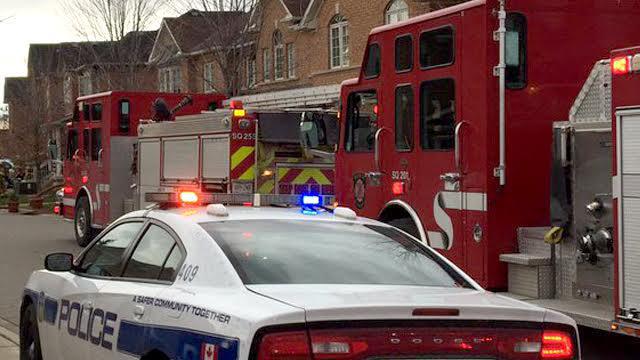Important Information for Brampton Residents After Massive Oshawa Fire
Published January 11, 2018 at 9:55 pm

Almost a year since a fire killed three sleeping people in Brampt
Almost a year since a fire killed three sleeping people in Brampton, out in the east end of the GTA another fire has tragically claimed lives, and Brampton Fire and Emergency has some important safety messages for Brampton residents.
A house fire in Oshawa this week led to the tragic death of an entire family, along with someone who was trying to save them. What makes this story even more tragic is that this was entirely preventable had the home been equipped with working smoke alarms, as Durham Region fire marshals explained during a tearful press conference upon the conclusion of their inspection.
In the wake of this tragedy, a number of officials from other Fire Services have issued statements outlining the need the install smoke alarms and fire safety plans.
Brampton’s Fire chief has also spoken up.
“Fire moves so fast that you may have less than 60 seconds to safely escape a fire, so early warning is crucial to survival,” said Brampton’s Fire Chief Bill Boyes. “Only working smoke alarms give you that early warning.”
Here is what you need to know when it comes to fire prevention and safety, according to Brampton Fire:
Simple smoke and carbon monoxide alarm tips:
-
Install smoke alarms on every storey and outside all sleeping areas of your home. For added protection, install a smoke alarm in every bedroom according to manufacturer’s recommendations. Larger homes may require additional smoke alarms.
-
Install carbon monoxide alarms outside all sleeping areas if your home has a fuel-burning appliance, fireplace or attached garage. For added protection, install a carbon monoxide alarm on every storey of your home according to manufacturer’s recommendations.
-
Test smoke and carbon monoxide alarms monthly by pressing the test button. Change the batteries every year.
-
Smoke and carbon monoxide alarms wear out over time. Replace alarms according to manufacturer’s recommendations.
Simple steps for home fire escape planning include:
-
Everyone should know two ways out of each room, if possible.
-
All exits must be unobstructed and easy to use.
-
If someone in your home has a disability, develop a home fire escape plan with your household that takes into account the individual’s unique needs. Determine who will be responsible for helping young children, older adults and anyone who needs assistance to escape.
-
Choose a meeting place outside, such as a tree or a lamp post, where everyone can be accounted for.
-
Call the fire department from outside the home, from a cell phone or a neighbour’s home.
-
Practise your home fire escape plan.
-
Once out, stay out. Never re-enter a burning building.
For people who live in apartment buildings and need assistance to escape:
-
Tell the superintendent or landlord if you need assistance.
-
Add your name to the ‘persons who require assistance’ list in your building’s fire safety plan, so the fire department knows which apartment you are in.
-
Know the emergency procedures outlined in your building’s fire safety plan.
The Ontario Fire Code requires working fire alarms in every building. Effective as of March 2006, it is the law for all Ontario homes to have a working smoke alarm on every storey and outside all sleeping areas. This covers single family, semi-detached and town homes, whether owner-occupied or rented. The owner of a building is responsible for complying with the Fire Code, except where otherwise specified, according to the Ministry of Community Safety and Correctional Services.
Stay safe, Brampton.
INsauga's Editorial Standards and Policies